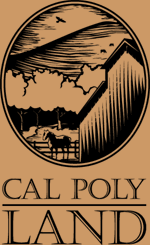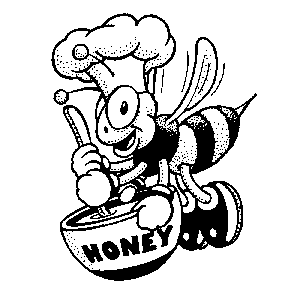|
We Do Bees: All About HONEY
|
|
|
Cal Poly Honey is produced every fall and spring quarter. Jars of fresh honey can "bee" found year-round at the Cal Poly Campus Market and at the Poly Plant Shop. This rich and delicious honey at our very one Cal Poly campus comes from the campuses spectacular 100 bee hives and five million bees! What is honey anyway? From the human point of view, honey is the prime product of the honeybee. Honey is a foodstuff, which is produced by the honeybee from the nectar of blossoms. Honeybees collect, transform and combine with specific substances of their own, furthermore storing and leaving it in honeycombs. Bees use the honey to feed the larvae during the winter. How is it made? Flowers have special glands called nectaries that produce nectar. Nectar is the sweet liquid which plants produce to attract insects for pollination. It consists of sugars dissolved in water. Honeybees suck up nectar from the nectaries of the flower with their long tongues and store it in their honey sacs. When the honeybee has filled it's honey sac with nectar, it returns to the hive. In the hive the bee regurgitates the nectar and passes it to the hive bees who put it in an empty cell in the hive for use as needed. While the nectar is in the bee's honey sac, it combines with enzymes. In the honey comb the waterevaporates and the chemicals from the bee change the nectar into honey. When the honey is ripe the bees seal it into the cells by putting wax caps on the honey filled cells. What are the different forms? • LIQUID HONEY : this honey is extracted from the combs and is sold in glass jars. It is available in many different colours depending on the flowers used by the bee. • COMB HONEY : is honey stored by bees in the cells of freshly built comb and is sold as sections or pieces of cut comb in plastic containers. • CHUNK HONEY : is liquid honey with one or more pieces of comb honey and is sold in glass jars. • CREAMED HONEY: all honeys granulate or crystallise with time. When the rate of crystallisation is controlled, a creamed honey is obtained. Creamed honey is suitable as a spread. |

